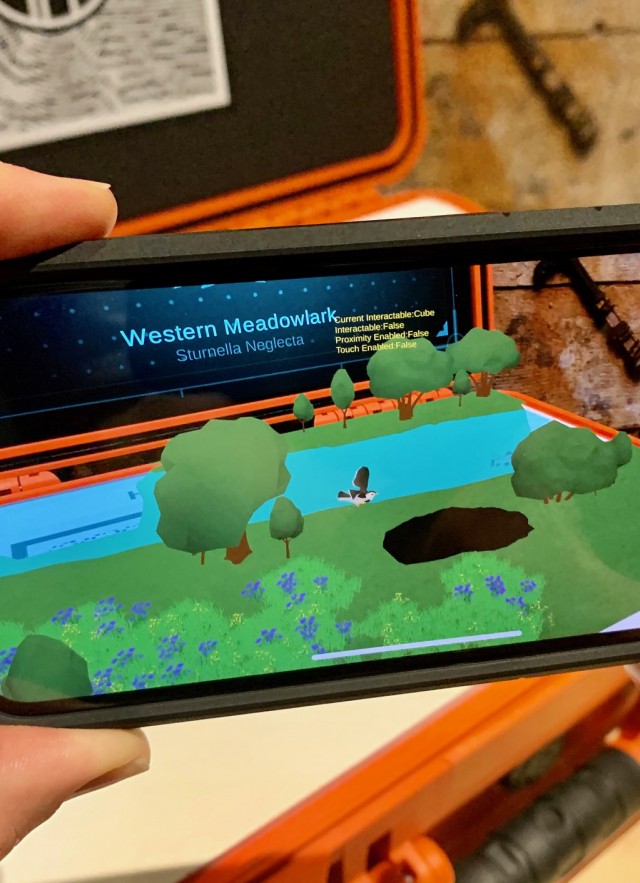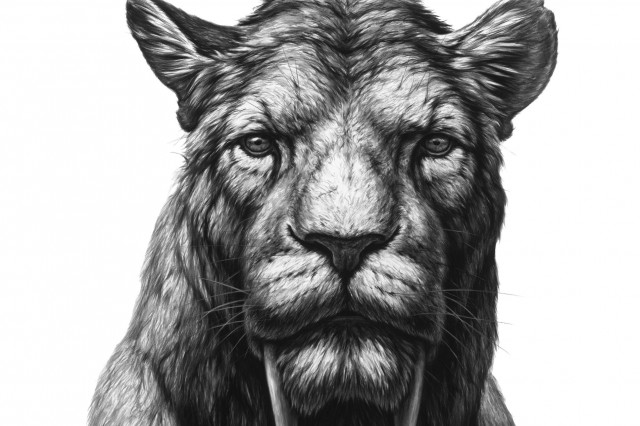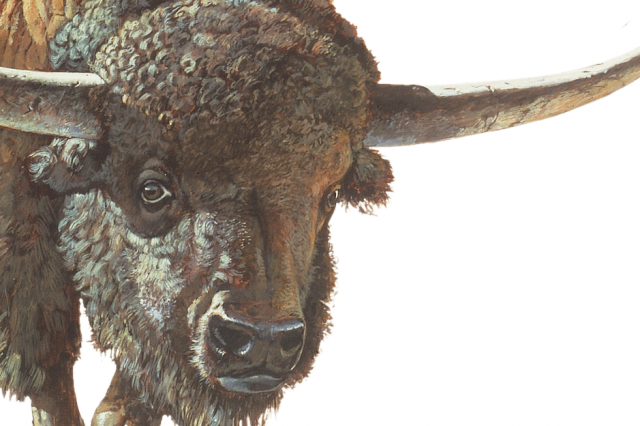Get a Grip on the Ice Age
New augmented reality research, using animations of prehistoric animals, shows how to counter misconceptions of the La Brea Tar Pits and spark knowledge that sticks

Scientific facts can sometimes be difficult to swallow, digest, and absorb. But researchers at the museum at La Brea Tar Pits, in collaboration with the University of Southern California, have taste-tested a technological way to make bites of knowledge go down easy.
For their study, published in the International Journal of Science Education, Dr. Emily Lindsey, Assistant Curator at La Brea Tar Pits, along with Alana Kennedy, an educational researcher of the University of Southern California, invited 62 adults to participate in a brief Augmented Reality experience that aimed to address two target scientific misconceptions about the Tar Pits, the only active ice age major metropolitan paleontological excavation site. The test used smartphones and tabletop AR experiences that illuminated paleohabitats as well as reconstructions of virtual animals that once placed their paws where Tar Pits visitors now plant their feet.

One of the untrue things that needed debunking was that tar pits acted like quicksand (as opposed to sticky traps) and submerged entrapped animals. In the exercise, participants watched animations and listened to a narrative that conveyed how the viscous tar led to the fossilization of large mammals—mammoths, dire wolves, sloths, short-faced bears—as well as microfossils like pollen and seeds. The second fiction was that megafauna got ensnared in the asphalt seeps frequently, when it was more like once a decade. The AR experience also employed a timeline showing this was a long drama that played out in the Pleistocene (between 50,000 and 10,000 years ago.) Participants also were presented with animations of immovable beasts. The images of prey and predators faded out on the screen, and then replaced by bones, symbolizing the decomposition and fossilization process.
At the end of the six-minute immersion into this prehistoric scene, participants reported feeling inquisitive, which means the short educational exercise prompted them to pay more attention to relevant details. Positive emotions and focused interest are powerful fuels for driving knowledge acquisition. Our museums are all about inspiring wonder in the natural world.

Alana Kennedy, the study’s lead author, said: “These are exciting findings because AR is often associated with engagement, and we see here that AR also affords educational benefits. We also noted that emotions, particularly curiosity, should be considered to support learning as well as engagement—this requires us to form a strong understanding of who our learners are and what it is they are interested in knowing.”
Dr. Emily Lindsey, Assistant Curator and Excavation Site Director at La Brea Tar Pits and a co-author of the study, said this research shows how a cost-effective technological method can feed enquiring museum visitors' minds.
“In addition to providing key insights on science learning, this research is really valuable for the museum community. Museums are grappling with how (and whether) to incorporate immersive and interactive technologies into their exhibits, but there is not a lot of data yet on how good these technologies are at teaching science, or whether visitors even want to engage with them! We hope to leverage the results of this study to support the creation of exhibits that are both informative and engaging at the Tar Pits and in the museum community at large.”
Building a 3D Menagerie
Matt Davis, vertebrate paleontologist and exhibition developer at NHMLAC, expertly crafted this stable Ice Age animation models—from meadowlarks to mammoths—with biological, practical, and artistic considerations in mind. The author of the newly published paper, Designing scientifically-grounded paleoart for augmented reality at La Brea Tar Pits [insert link], Davis says paleoart can sometimes perpetuate misconceptions about prehistoric life. Whether it’s a sculpture of Columbian mammoth sinking into bubbling deep asphalt pools (when it was more akin to sticky fly paper), a Harlan’s ground sloth sporting the wrong number of toes, or a depiction of ancient western camels half the size they would have been as they paced along Ice Age mid-Wilshire.
Davis says that if paleoartists today document their sources and records that informed their works, which could include murals, sculptures, paintings, or animations, then the undergirding evidence can be debated and referenced in the future. In creating these moveable beasts, Davis considered the existing scientific evidence regarding both their appearance and behavior in order to fill in the outlines of these fierce and charismatic Ice Age inhabitants.
SABER-TOOTHED CAT
Smilodon fatalis
This saber-toothed cat model, with its dappled coat, is a speculative but commonly used pattern for reconstructions, consistent with the common interpretation of Smilodon fatalis as an ambush predator that lived in mixed habitats. They used the similarly-sized extant African lion as a model for how the cat walked and attacked prey.
TERATORN
Teratornis merriami
Probably the best known of Rancho La Brea’s birds, the teratorn was large condor-like bird wingspan of 3–4 meters. These big birds had white heads, research has shown, that would help camouflage them from small prey looking upward towards their demise. Their documented life history and traits all point to this feathered giant being more of a soaring scavenger than an active predator on the ground given it's awkward stork-like gait.
DIRE WOLF
Aenocyon dirus
To depict the extinct dire wolf the researchers used existing paleontological evidence and a musculoskeletal study to inform its appearance. It's reddish-coat was believed to be more like a coyote's, though the dire wolf's locomotion and behavior was related to other extinct social pack animals—grey wolves.
TAR PITS SPRING
We will soon be inviting all visitors to participate in an in-person AR submersion experience into Ice Age L.A.! Details to come.

